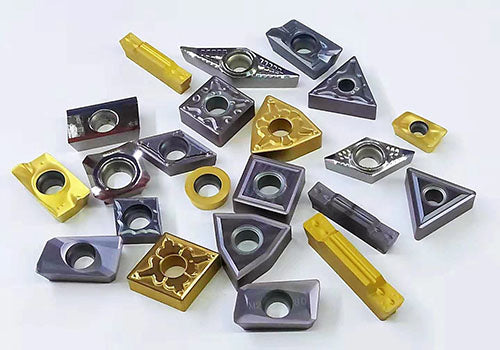
CNC Inserts 101: A Beginner's Guide to the Fundamentals
Share
Introduction
CNC inserts are critical components of CNC machining that play a crucial role in achieving precision, accuracy, and efficiency. They are the replaceable cutting tips that are fitted onto the cutting tool's shank, such as drills, milling cutters, and turning tools. The choice of the right CNC insert depends on several factors, such as the material to be machined, cutting speed, feed rate, and depth of cut. This article provides a beginner's guide to the fundamentals of CNC inserts.
Types of CNC Inserts
CNC inserts come in different shapes, sizes, and materials. The most common shapes are round, square, and triangular, while the most common materials include carbide, ceramic, and high-speed steel (HSS). Carbide inserts are the most popular due to their excellent wear resistance, toughness, and durability. They are ideal for machining hard materials such as stainless steel, titanium, and cast iron. Ceramic inserts, on the other hand, are best suited for high-speed machining of heat-resistant materials such as nickel alloys and composites. HSS inserts are suitable for low-speed machining of soft materials such as aluminum and brass.
How to Choose the Right CNC Insert
Choosing the right CNC insert can be a daunting task, especially for beginners. The first step is to consider the material to be machined. Hard materials require tough inserts, while soft materials require sharp inserts. The second step is to consider the cutting speed, feed rate, and depth of cut. High-speed machining requires inserts with high wear resistance, while low-speed machining requires inserts with sharp cutting edges. The third step is to consider the insert's geometry, such as the shape, size, and nose radius. The geometry determines the cutting forces, chip evacuation, and surface finish.
CNC Insert Maintenance
CNC inserts require proper maintenance to ensure optimal performance and longevity. The first step is to ensure proper installation and clamping. The insert should be securely clamped to prevent vibration, chatter, and premature wear. The second step is to monitor the cutting conditions and adjust them accordingly. Overheating, chipping, and excessive wear are signs of poor cutting conditions that require adjustments. The third step is to inspect the inserts regularly for signs of wear, damage, or breakage. Worn or damaged inserts should be replaced immediately to avoid compromising the machining quality and accuracy.
Conclusion
CNC inserts are critical components of CNC machining that are essential for achieving precision, accuracy, and efficiency. Choosing the right insert depends on several factors, such as the material to be machined, cutting speed, feed rate, and depth of cut. Proper maintenance and inspection are essential for optimal insert performance and longevity. With this beginner's guide to the fundamentals of CNC inserts, you can make informed decisions when selecting, using, and maintaining CNC inserts for your machining needs.




